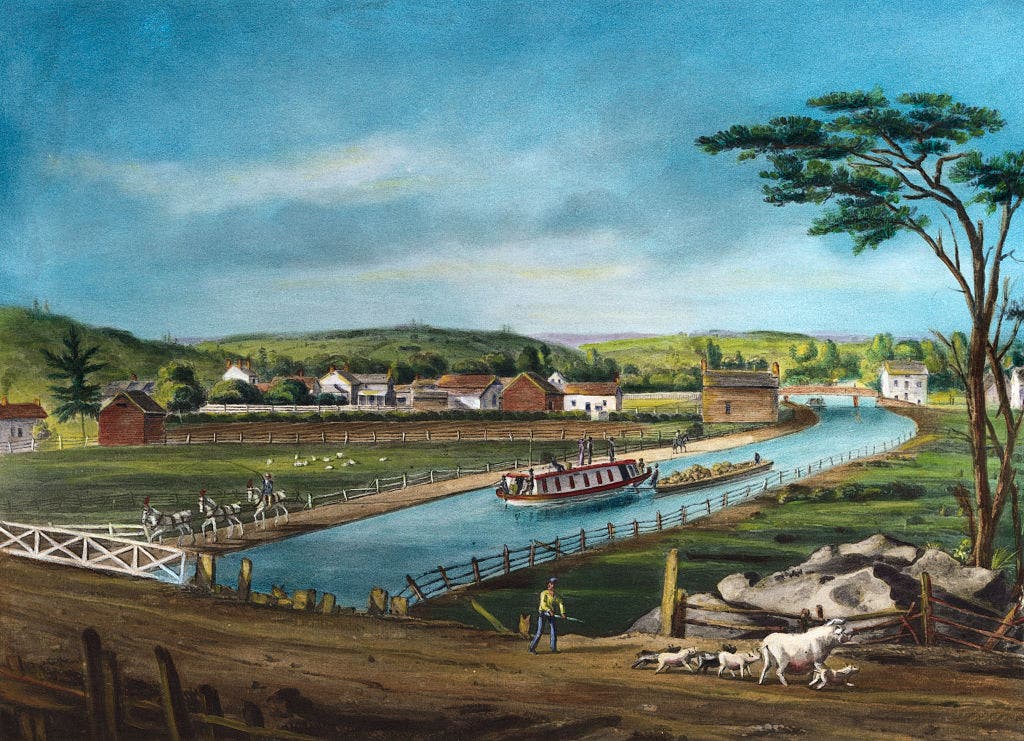The Erie Canal was completed on October 26, 1825, connecting the Great Lakes to the Atlantic Ocean and playing a major role in American economic development. With 18 aqueducts, 83 locks, and a 570-foot change in elevation, the canal spanned about 350 miles from Buffalo to Albany, New York. It was a monumental infrastructure project that helped make New York City the chief port in the United States, and opened up western territories for settlement and trade. The construction of the canal began in 1817 and was celebrated with a ceremony officiated by New York Gov. DeWitt Clinton, who poured water from Lake Erie into the Atlantic to mark the union of the two bodies of water.
Despite the federal government’s refusal to fund the project, support from New York legislators and taxpayers enabled the completion of the Erie Canal. The investment paid off, as the canal quickly became a commercial success. Within nine years, the cost of construction was recovered, and the explosion of trade predicted by Gov. Clinton came to fruition. The canal facilitated the transportation of goods at a much lower cost compared to road transportation, leading to a significant increase in trade along the route. By 1837, the amount of wheat transported down the canal from Buffalo had increased dramatically, signaling its impact on economic growth in the region.
The Erie Canal cemented New York City’s status as America’s premier seaport, commercial center, and gateway to the interior. It played a significant role in the development of New York as the “Empire State,” leading in population, industry, and economic strength. Despite becoming commercially obsolete due to advances in transportation such as trains and trucks, the canal’s historical significance has been increasingly appreciated in recent years. The Erie Canalway National Heritage Corridor, established in 2000, recognizes the canal as the longest artificial waterway and greatest public works project in North America, essential in shaping the nation’s identity.
To celebrate the 200th anniversary of the Erie Canal in 2025, the Buffalo Maritime Center and New York State Canal Corporation are constructing a replica of the Seneca Chief, the boat on which Gov. Clinton made his ceremonial journey down the canal. The planned recreation of the “wedding of the waters” ceremony will honor the canal’s legacy and impact on American history. The Erie Canalway National Heritage Corridor continues to highlight the canal’s contribution to the nation’s character, emphasizing the vision, determination, ingenuity, and hard work that went into its construction. The Erie Canal remains a symbol of American ingenuity and resilience, underscoring the transformative power of infrastructure projects in shaping the nation’s growth and identity.


